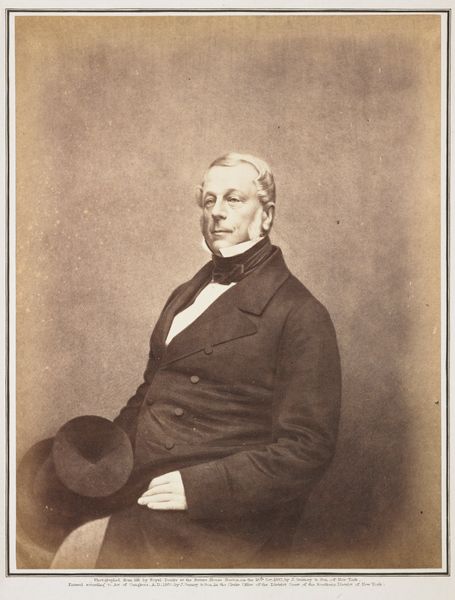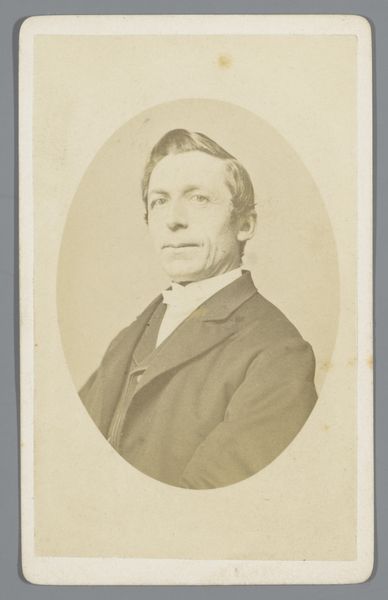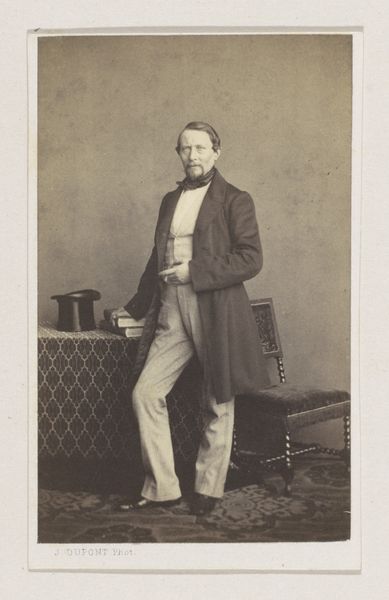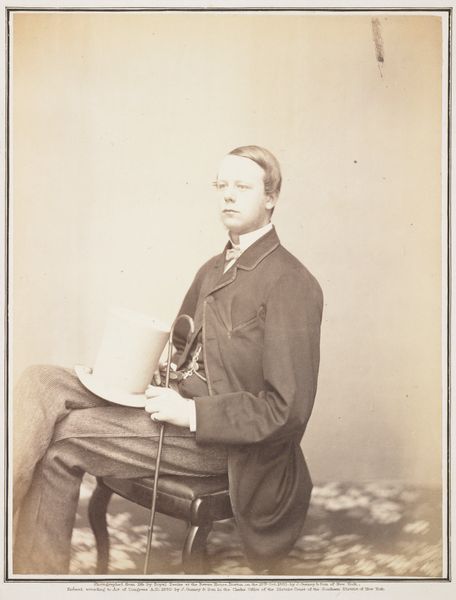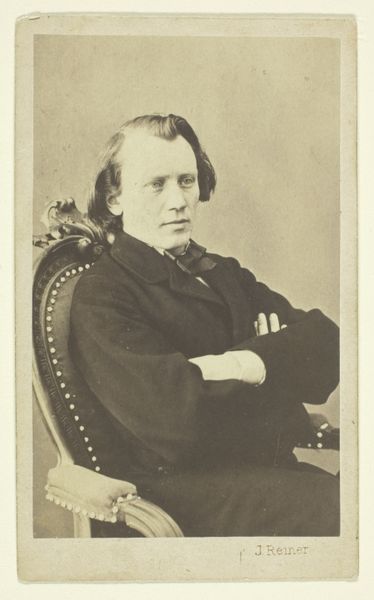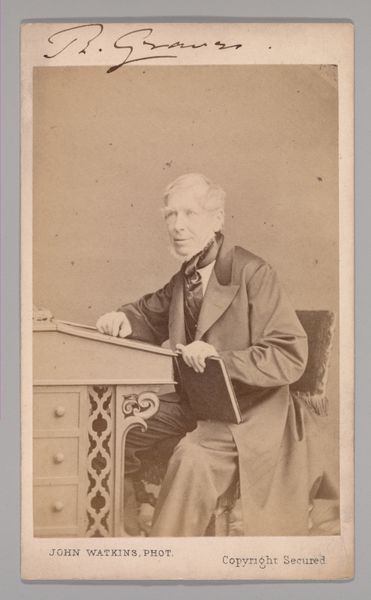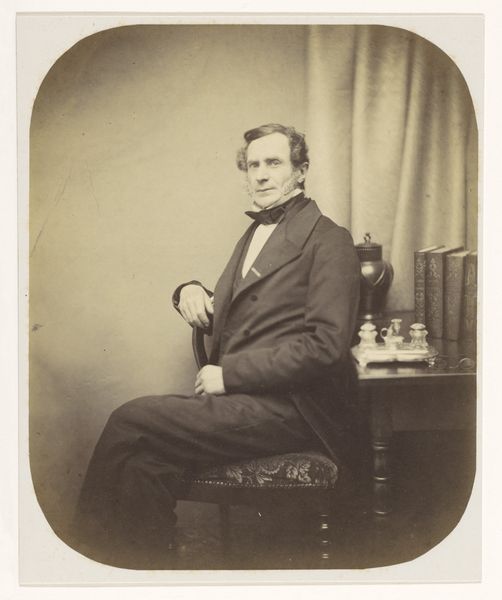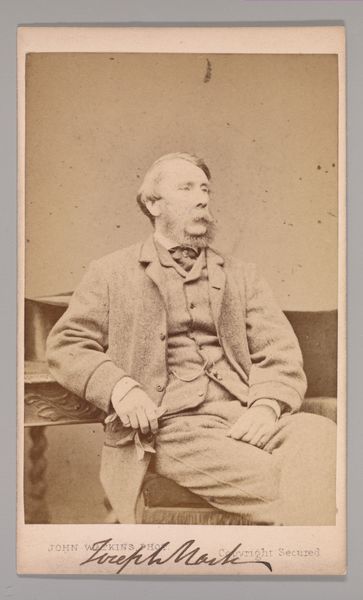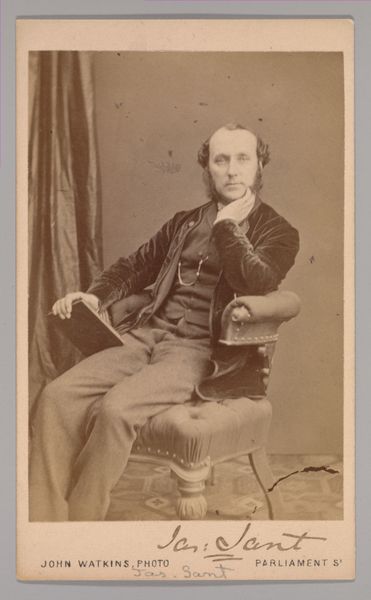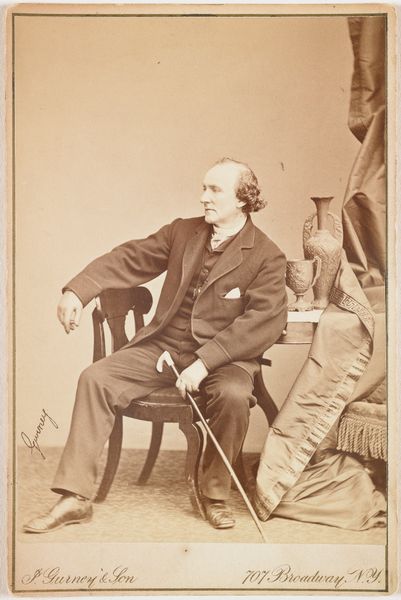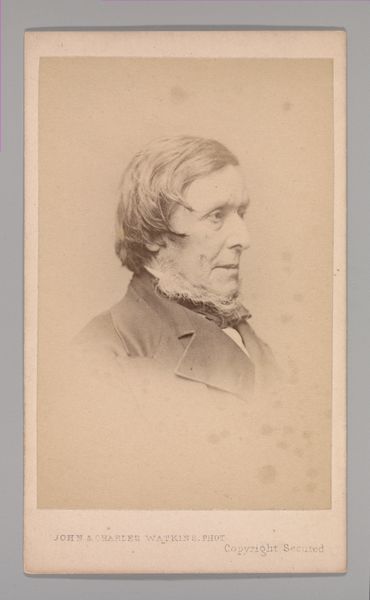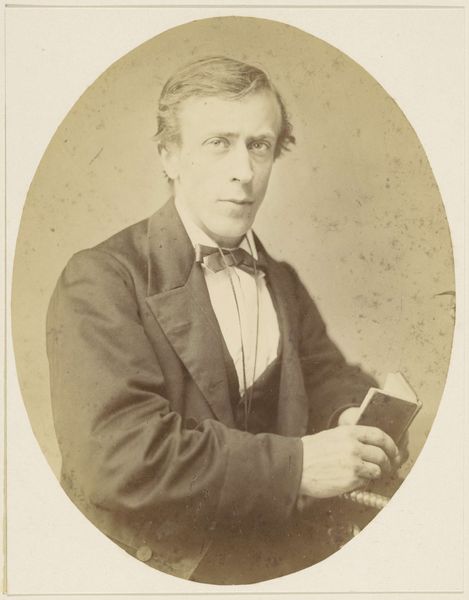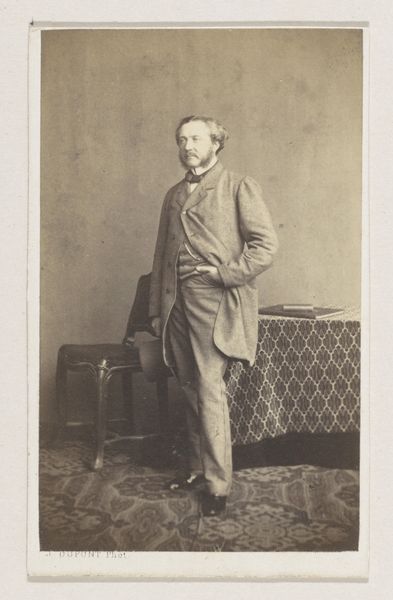![[William Collingwood] by John and Charles Watkins](/_next/image?url=https%3A%2F%2Fd2w8kbdekdi1gv.cloudfront.net%2FeyJidWNrZXQiOiAiYXJ0ZXJhLWltYWdlcy1idWNrZXQiLCAia2V5IjogImFydHdvcmtzLzJkOWFhM2ZlLTcxYTYtNDgxNi1hZDQ4LTg3ZmRiZTIxZDM1NS8yZDlhYTNmZS03MWE2LTQ4MTYtYWQ0OC04N2ZkYmUyMWQzNTVfZnVsbC5qcGciLCAiZWRpdHMiOiB7InJlc2l6ZSI6IHsid2lkdGgiOiAxOTIwLCAiaGVpZ2h0IjogMTkyMCwgImZpdCI6ICJpbnNpZGUifX19&w=3840&q=75)
daguerreotype, photography
#
portrait
#
daguerreotype
#
photography
#
historical photography
#
19th century
#
men
#
portrait art
Dimensions: Approx. 10.2 x 6.3 cm (4 x 2 1/2 in.)
Copyright: Public Domain
Curator: Gazing upon this piece, one almost feels transported. This daguerreotype portrait, created by John and Charles Watkins in the 1860s, captures William Collingwood. There's a certain gravity in it, isn’t there? Editor: Indeed. He looks pensive, maybe even a little weary. His hand resting on his face lends this air of intellectual introspection. You sense he's carrying the weight of the world, or perhaps a great many unpublished poems. Curator: It's funny you mention poetry, given Collingwood's association with the arts. His presence exudes this understated dignity common during the Victorian era, further underlined by the carefully chosen details in the setting: his book and clothing suggest scholarship and respectability. Do you think that the book that props up his left arm bears symbolic meaning or compositional balance to the portrait? Editor: I'm leaning into compositional considerations. I'd wager that those were carefully constructed symbols by John and Charles Watkins as well as period requirements. Men during this time had certain expectations with attire, scholarly pursuits, and pose during these sittings. This feels particularly gendered given it's from the Victorian Era when gender roles were so important and reinforced through public actions such as photography. Curator: So it appears that there's more to the seemingly objective daguerreotype portraits. Collingwood's slight asymmetry with his head position also reveals a vulnerability. Perhaps the accoutrements served to counterbalance any deviation away from ideal portrayals of masculinity. Editor: Right! So you see both something new and a perpetuation of period ideals within portraiture. This work really embodies some key issues of visual language: its visual encoding and what could potentially remain unsaid is really critical. It reminds us to see photography, not as a static artifact but to question it. I think that's the crux of where its power rests. Curator: Absolutely. Seeing beyond what’s presented and into how visual elements work through and for social impact... Now I want to revisit some portraits I thought I knew!
Comments
No comments
Be the first to comment and join the conversation on the ultimate creative platform.
